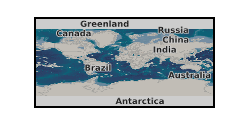Keyword
Gneiss
Type of resources
Available actions
Topics
Keywords
Contact for the resource
Provided by
Years
Update frequencies
From
1
-
1
/
1
-

The dataset consists of a table of 64 isotope ratio measurements of the AMES Ce standard (Willbold, 2007). The data was collected at Imperial College, London between April 2013 and March 2014 using a ThermoScientific Triton thermal-ionisation mass spectrometer following the technique described in Willbold, Journal of Analytical Atomic Spectrometry, 2007. The data is used to assess the reproducibility and accuracy of the mass spectrometric setup available at the time. Reference: Willbold, M., 2007. Determination of Ce isotopes by TIMS and MC-ICPMS and initiation of a new, homogeneous Ce isotopic reference material. Journal of Analytical Atomic Spectrometry, 22: 1364-1372 https://doi.org/10.1039/B705306A
 NERC Data Catalogue Service
NERC Data Catalogue Service